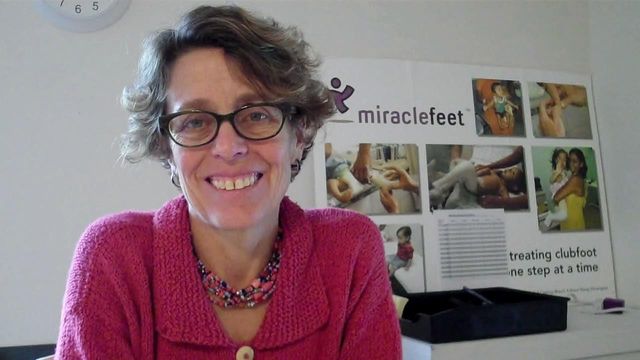Helping Holiday: miraclefeet sets children's lives on new path
In the United States, a baby born with club foot is immediately sent for treatment. The congenital deformity causes a child's feet to be rotated in at the ankles. Babies born with club foot in the developing world aren't so lucky.
Posted — UpdatedIn the United States, a baby born with club foot is immediately sent for treatment. The congenital deformity causes a child's feet to be rotated in at the ankles.
But, through braces and a quick surgery, a baby's feet can be repositioned. Once club foot is corrected, the child can grow up to run and play and live her life - just as soccer superstar Mia Hamm did after her club foot was treated when she was a toddler.
Babies born with club foot in the developing world aren't so lucky. In places like India, Tanzania, Nicaragua, for instance, babies born with club foot, who come from impoverished families, are often destined to live a life of poverty and suffering. Because they're unable to easily walk, they can't attend school. They often live their lives at home, out of public view, where they are more likely to suffer physical and sexual abuse.
There are lots of barriers to health care for those living in the developing world. But Colloredo-Mansfeld tells me that there are three main hurdles for babies with club foot: People aren't aware it's a treatable condition; there's no access to treatment; and a high quality, low-cost brace hasn't been available - until now.
As part of its work, miraclefeet has developed a low cost brace, working in partnership with Stanford University’s Design School. The new brace costs about $20 each, less than the $350 to $1,000 price tag for the typical brace, and is very easy to use.
In fact, miraclefeet recently was named a laureate of The Tech Awards 2015, one of 10 global innovators recognized at this level for applying technology to benefit humanity and spark global change. The award is a signature program of The Tech Museum of Innovation in Silicon Valley.
Colloredo-Mansfeld also has been busy building partnerships in countries where the nonprofit is working, teaching local doctors and health care professionals to spread the word that club foot is treatable and to ensure kids with club foot have access to care. (Miraclefeet has treated children as old as 12).
Miraclefeet staff hear incredible stories of parents, especially mothers, who go out of their way to get treatment for the child. Many of the families can barely afford the bus fare to get to the doctor for treatment. Some have even fainted in the clinic because they've skipped meals to get their child care.
In Nicaragua, Colloredo-Mansfeld remembers a mother who traveled 18 hours total multiple times - six hours each by bus, horse and boat - to bring her 10-year-old daughter for treatment. In Liberia, she remembers twin 12-year-old girls, who were so malnourished that they looked 7 or 8, coming into the clinic. Once the club foot was corrected, they were able to attend school for the first time. They'd been hidden in their home their entire lives.
"The teacher said, 'We knew you were there, but we never thought we'd see you here,'" she said.
Each year, about 200,000 children are born with club foot. In the last five years, miraclefeet has been able to treat more than 10,000 of them. Colloredo-Mansfeld tells me that more and more countries are coming to the nonprofit for assistance. Of course, it comes down to money. It costs about $250 to treat a child with club foot. That total includes the brace, regular visits with a doctor and other efforts to spread the word that club foot is treatable.
"We have countries emailing us once a week and we don't have the money," she said.
The nonprofit needs donations of any level to support its efforts around the world.
- $20 provides a club foot brace for a child;
- $100 provides casting, braces and transportation to and from the clinic for a family;
- $250 provides full treatment for one child.
Related Topics
• Credits
Copyright 2024 by Capitol Broadcasting Company. All rights reserved. This material may not be published, broadcast, rewritten or redistributed.






